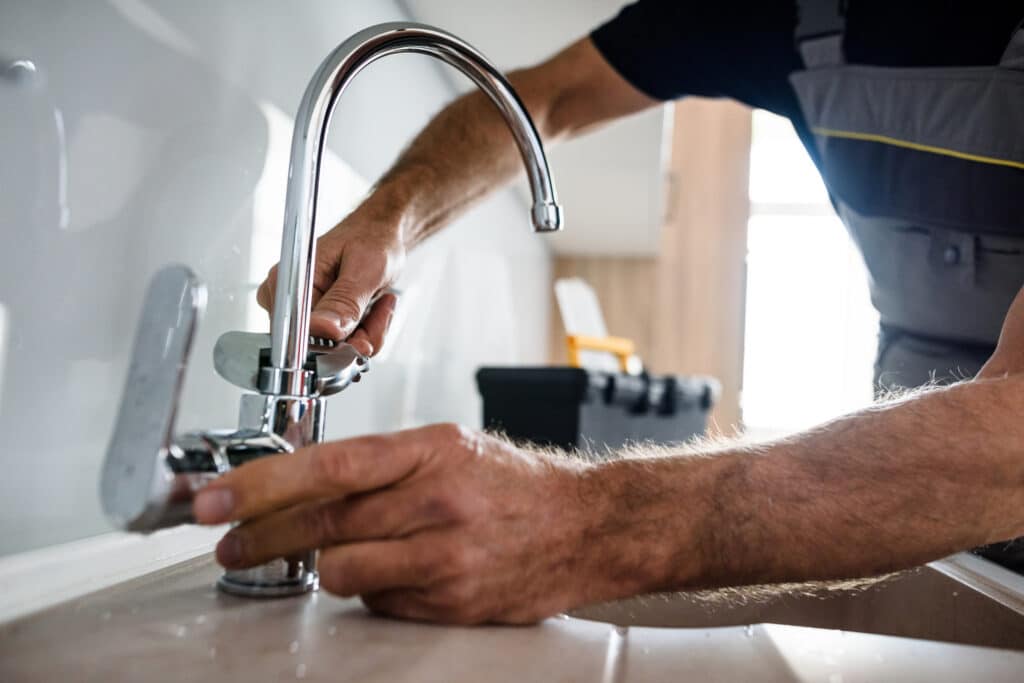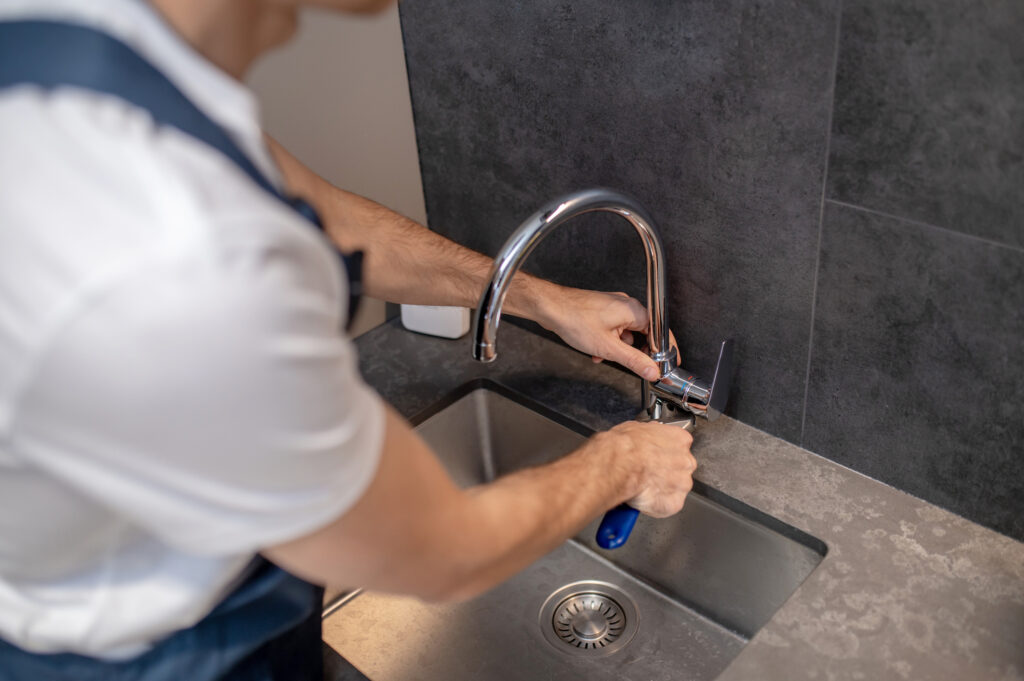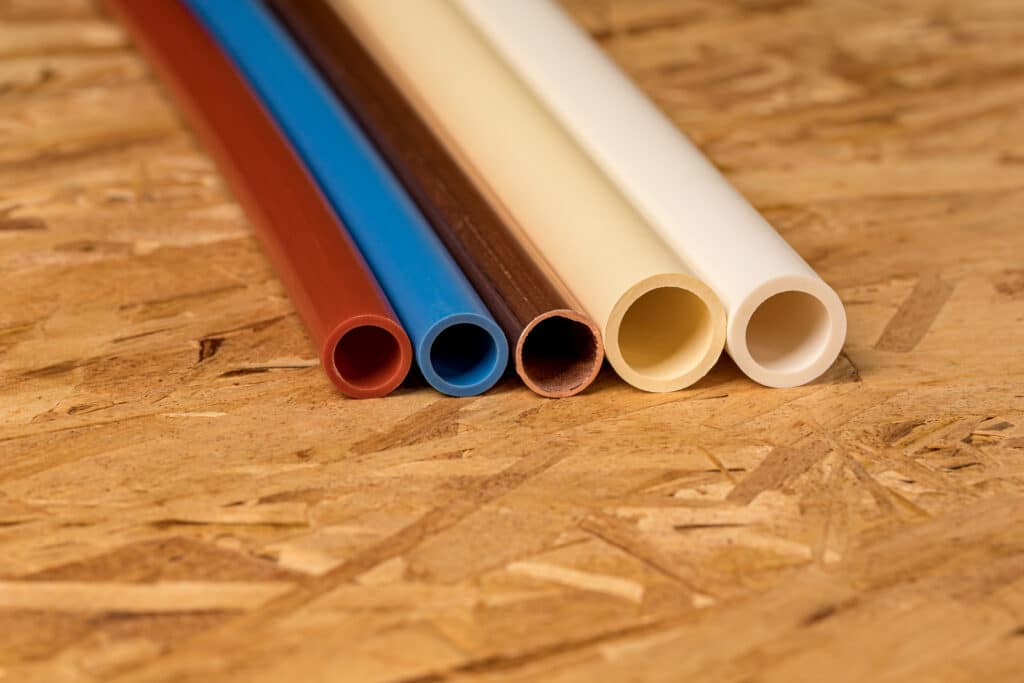Why Regular Faucet Maintenance Helps Avoid Costly Repairs
Faucet maintenance is essential to keeping your plumbing system in top shape and preventing costly repairs. A small drip or a minor clog might not seem like a big issue at first, but over time, these problems can worsen. Ignoring regular maintenance can lead to wasted water, higher utility bills, and potential damage to your plumbing fixtures.
Homeowners in Springtown, TX, know the importance of a properly functioning faucet. With changing weather conditions and varying water quality, maintaining faucets ensures a steady water flow and prevents unexpected breakdowns. Routine inspections and cleaning can help extend the life of your fixtures and save money in the long run.
At Benjamin Franklin Plumbing of Oklahoma City, we understand how essential faucet maintenance is for homeowners. Whether it’s a slow drip, rust buildup, or decreased water pressure, regular upkeep can prevent these minor issues from turning into expensive repairs. In this article, we’ll discuss the benefits of faucet maintenance, common problems, and how taking simple preventative measures can keep your faucets working efficiently.
Common Faucet Issues That Arise Without Maintenance
Neglecting faucet maintenance can lead to several problems that affect both water efficiency and plumbing longevity. What starts as a minor inconvenience can turn into a plumbing repair if left unaddressed. Here are some of the most common faucet issues that homeowners encounter due to lack of regular upkeep.
One of the most frequent problems is a leaky faucet. A slow drip might not seem like a big deal, but over time, it can waste hundreds of gallons of water. This not only increases utility bills but can also cause water damage to sinks and countertops. Leaks are often caused by worn-out washers, seals, or O-rings, which need periodic replacement.
Another issue is mineral buildup and corrosion. Hard water contains minerals like calcium and magnesium, which can accumulate inside the faucet. This buildup restricts water flow, reduces pressure, and can eventually damage internal components. Corrosion, especially in metal faucets, can weaken the fixture and lead to cracks or leaks.
Loose or damaged handles are also common when faucets aren’t properly maintained. Over time, daily use can cause screws and internal components to wear out, making it difficult to turn the faucet on or off. In some cases, this can lead to water continuing to flow even when the handle is in the off position.
Regular faucet maintenance can prevent these issues and ensure that your plumbing remains in excellent condition. By addressing small concerns early, homeowners can avoid expensive repairs and extend the life of their fixtures.

How Faucet Maintenance Prevents Leaks
One of the biggest benefits of faucet maintenance is preventing leaks before they start. A small leak may not seem urgent, but over time, it can lead to wasted water, higher utility bills, and even structural damage. Routine inspections and minor repairs can keep faucets working properly and extend their lifespan.
Leaks often occur when washers, O-rings, or seals wear out. These small components create a tight seal that prevents water from escaping when the faucet is off. As they age, they can crack or degrade, allowing water to drip continuously. Checking these parts regularly and replacing them when needed helps prevent leaks and reduces water waste.
Another key factor in leak prevention is monitoring water pressure. High water pressure can put stress on faucet components, leading to cracks or loose fittings. If you notice sudden changes in water pressure, it could indicate an issue with your plumbing that needs professional attention. Installing a pressure regulator can help prevent damage from excessive pressure.
Hidden leaks can also develop beneath sinks or inside walls, leading to mold growth and water damage. Regular maintenance involves checking for damp spots, discoloration, or musty odors around the faucet area. Catching these signs early can prevent expensive repairs down the line.
By making faucet maintenance a priority, homeowners can avoid the frustration of unexpected leaks. A little effort now can save money and prevent the hassle of dealing with water damage in the future.
The Role of Cleaning in Faucet Longevity
Regular cleaning plays a major role in faucet maintenance, helping to extend the lifespan of fixtures and ensure optimal performance. Over time, faucets accumulate dirt, grime, and mineral deposits that can affect both water flow and appearance. Keeping them clean prevents buildup and reduces the risk of damage.
One of the biggest concerns is mineral deposits from hard water. These deposits can clog aerators, restrict water flow, and cause faucets to function inefficiently. Homeowners in Springtown, TX, where water hardness levels may vary, should clean their faucets regularly to prevent blockages. A simple soak in vinegar can dissolve mineral buildup, restoring normal water pressure.
Dirt and bacteria accumulation is another issue. Faucet handles are touched multiple times a day, making them a hotspot for germs. Wiping down the surface with a mild disinfectant prevents bacteria from spreading and keeps the fixture looking new. For stainless steel and chrome finishes, a microfiber cloth helps maintain shine without scratching.
Maintaining a clean faucet also helps prevent corrosion and rust. If left unchecked, moisture and debris can weaken metal components, leading to leaks or structural failure. Drying the faucet after use and ensuring that leaks are promptly fixed can prevent corrosion-related damage.
By incorporating regular cleaning into faucet maintenance, homeowners can improve hygiene, maintain water efficiency, and extend the life of their plumbing fixtures. A little effort in upkeep goes a long way in preventing costly replacements.
Preventing Rust and Corrosion in Faucets
Rust and corrosion are two of the most common threats to faucet longevity. Without proper faucet maintenance, these issues can weaken fixtures, cause leaks, and lead to expensive replacements. Understanding how corrosion develops and taking preventative steps can help homeowners avoid unnecessary plumbing problems.
One major factor in faucet corrosion is water quality. Hard water contains minerals like calcium and magnesium, which can react with metal components, leading to rust formation. Additionally, water with a high chlorine content may cause certain metal finishes to deteriorate faster. Using a water softener or installing a filtration system can help reduce mineral buildup and protect faucets from corrosion.
Moisture is another key contributor. When faucets remain damp for long periods, oxidation can occur, leading to rust. Wiping the faucet dry after use, especially in humid areas like Springtown, TX, can help prevent this issue. For extra protection, applying a thin layer of mineral oil or a specialized faucet sealant can create a moisture barrier.
Another way to prevent rust and corrosion is by addressing small issues before they worsen. If you notice discoloration, rough patches, or a metallic smell in your water, it may indicate early corrosion. Promptly replacing worn-out washers, O-rings, or seals can prevent further damage and extend the faucet’s lifespan.
By taking proactive steps in faucet maintenance, homeowners can prevent rust and corrosion, keeping their plumbing fixtures in excellent condition. Investing in regular upkeep now can help avoid the hassle and cost of premature replacements later.
Extending the Life of Faucet Components
Proper faucet maintenance not only prevents leaks and corrosion but also extends the life of essential components. Over time, small parts like washers, O-rings, and cartridges wear out, leading to inefficiencies and potential damage. Regular inspections and minor repairs can keep your faucet functioning smoothly for years.
One of the simplest ways to extend faucet life is by checking and replacing O-rings and washers. These small rubber components create a watertight seal, preventing leaks. As they age, they can dry out, crack, or become loose, causing drips and reduced efficiency. Inspecting them periodically and replacing them when necessary ensures the faucet continues to operate properly.
Another key aspect of maintenance is lubricating moving parts. Handles and valves can become stiff or difficult to turn due to mineral buildup or lack of lubrication. Applying a plumber-approved silicone-based lubricant keeps these parts moving freely, reducing wear and tear. Avoid petroleum-based products, as they can degrade rubber seals over time.
Faucets also contain cartridges and aerators that regulate water flow. A clogged aerator can lead to weak water pressure, while a damaged cartridge may cause inconsistent water temperature. Cleaning aerators monthly and replacing cartridges as needed helps maintain steady performance and prevents unnecessary strain on the fixture.
By taking small maintenance steps, homeowners can prevent premature wear and extend the life of their faucets. A little attention to detail ensures smooth operation and avoids the need for costly repairs or replacements in the future.
Seasonal Considerations for Faucet Maintenance
Different seasons can affect your plumbing system, making faucet maintenance an important year-round task. Changing temperatures, humidity levels, and water usage patterns can put extra strain on your faucets, leading to potential issues if not properly managed.
Winter months bring freezing temperatures, which can cause pipes and faucets, especially outdoor ones, to freeze and crack. To prevent this, homeowners in Springtown, TX, should disconnect garden hoses, insulate outdoor faucets, and allow indoor faucets to drip slightly during extreme cold. This helps relieve pressure in the pipes and prevents ice buildup.
In contrast, summer months often increase water usage. Activities like lawn watering, filling pools, and frequent handwashing put additional strain on faucets. Checking for leaks and ensuring aerators are clear can help maintain strong water pressure and efficiency during this time.
Spring and fall are ideal seasons for routine faucet inspections and cleaning. These transitional months provide the perfect opportunity to check for corrosion, clean mineral deposits, and replace worn-out components before extreme temperatures set in. Seasonal changes in water quality can also impact faucet performance, so keeping an eye on buildup and discoloration is essential.
By adjusting faucet maintenance practices throughout the year, homeowners can avoid seasonal plumbing problems. A proactive approach ensures faucets remain in top condition, preventing unexpected repairs and improving overall water efficiency.
When to Call a Professional Plumber
While regular faucet maintenance can prevent many common issues, some problems require professional attention. Ignoring serious plumbing concerns can lead to costly repairs, water damage, and increased utility bills. Knowing when to call a plumber ensures that your faucet, and the entire plumbing system, remains in top condition.
Persistent Leaks and Dripping Faucets
A dripping faucet might seem minor, but if the issue persists after replacing washers, O-rings, or seals, a deeper problem may be at play. The issue could stem from a worn-out valve seat, a corroded cartridge, or a problem within the internal plumbing connections. Left unchecked, persistent leaks can waste hundreds of gallons of water, leading to higher water bills and potential mold growth. A plumber can accurately diagnose the issue and make the necessary repairs.
Low Water Pressure or Inconsistent Flow
If cleaning the aerator doesn’t resolve weak water pressure, there may be a more significant issue within the plumbing system. Hidden leaks, mineral buildup in pipes, or even municipal water supply problems could be affecting water flow. In some cases, old pipes may have developed corrosion, restricting the passage of water. A professional plumber has the tools to locate the exact cause and restore proper pressure.
Unusual Noises Coming from the Faucet
Strange noises such as banging, whistling, or screeching when turning on a faucet often indicate plumbing issues. These sounds may be caused by trapped air, loose components, or excessive water pressure. Water hammer, a condition where water suddenly stops or changes direction in the pipes, can damage plumbing fixtures over time. A plumber can install pressure regulators or air chambers to prevent long-term damage.
Rust-Colored Water or Bad Odors
If you notice discolored water coming from your faucet, it could be a sign of internal pipe corrosion or sediment buildup. Rust-colored water usually indicates deteriorating metal pipes, which can affect water quality and taste. Similarly, a foul smell from the faucet may suggest bacterial growth in the pipes. A plumber can assess whether the issue is isolated to your home’s plumbing or linked to the municipal water supply.
Recurring Faucet Issues
If a faucet problem keeps coming back despite repeated maintenance, it may be time for professional intervention. Persistent issues such as frequent leaks, loose handles, or sudden pressure changes can indicate structural damage to the fixture or underlying plumbing. In some cases, replacing the faucet entirely may be more cost-effective than repeated repairs. A plumber can help determine whether a repair or replacement is the best solution.
Why Faucet Maintenance Matters in Springtown, TX
Regular faucet maintenance is essential for homeowners in Springtown, TX, where environmental factors like water quality and seasonal weather changes can impact plumbing systems. Without proper upkeep, faucets can develop leaks, mineral buildup, and corrosion, leading to costly repairs or premature replacements. Understanding how faucet maintenance can prevent these issues is key to ensuring long-lasting, efficient plumbing.
Water quality plays a significant role in faucet maintenance. Many areas, including Springtown, TX, have moderate to hard water, meaning it contains higher levels of minerals like calcium and magnesium. Over time, these minerals form deposits inside faucets, clogging aerators and reducing water flow. Regular faucet maintenance, including cleaning aerators and descaling mineral buildup, helps prevent these problems and ensures a steady water supply.
The local climate also affects faucet maintenance needs. In the winter, freezing temperatures can cause pipes and outdoor faucets to crack if not properly insulated. Meanwhile, summer months bring increased water usage, putting extra strain on faucets. Seasonal faucet maintenance steps, such as winterizing outdoor fixtures and checking for leaks in the summer, help prevent damage and costly repairs.

FAQs About Faucet Maintenance
1. How often should I perform faucet maintenance?
Regular faucet maintenance should be done at least every three to six months. This includes checking for leaks, cleaning aerators, and inspecting washers and O-rings. In areas with hard water, such as Springtown, TX, monthly cleaning of faucet components can help prevent mineral buildup and improve performance.
2. What’s the best way to clean hard water buildup from my faucet?
To remove mineral deposits caused by hard water, soak the faucet aerator or spout in a solution of equal parts white vinegar and water for about 30 minutes. This dissolves calcium and magnesium buildup, restoring proper water flow. For stubborn deposits, use a soft brush to scrub the affected areas gently.
3. Can a dripping faucet significantly increase my water bill?
Yes, even a small drip can waste hundreds of gallons of water over time, leading to higher utility bills. A faucet that drips once per second can waste more than 3,000 gallons of water annually. Regular faucet maintenance, including replacing worn-out washers or seals, can prevent unnecessary water waste and save money.
4. When should I replace a faucet instead of repairing it?
If a faucet has frequent leaks, low water pressure, or visible corrosion, it may be time for a replacement. Older faucets with outdated parts can be difficult to repair, and replacing them with a newer, more efficient model can help conserve water and improve functionality. A plumber can assess whether repairs or a full replacement is the better option.
5. Are there specific maintenance tips for outdoor faucets?
Outdoor faucets require special care, especially in colder months. Before winter, disconnect hoses, drain the faucet, and install an insulated cover to prevent freezing and pipe bursts. During the summer, check for leaks and ensure proper water flow, as outdoor faucets are used more frequently for watering gardens and washing vehicles.























